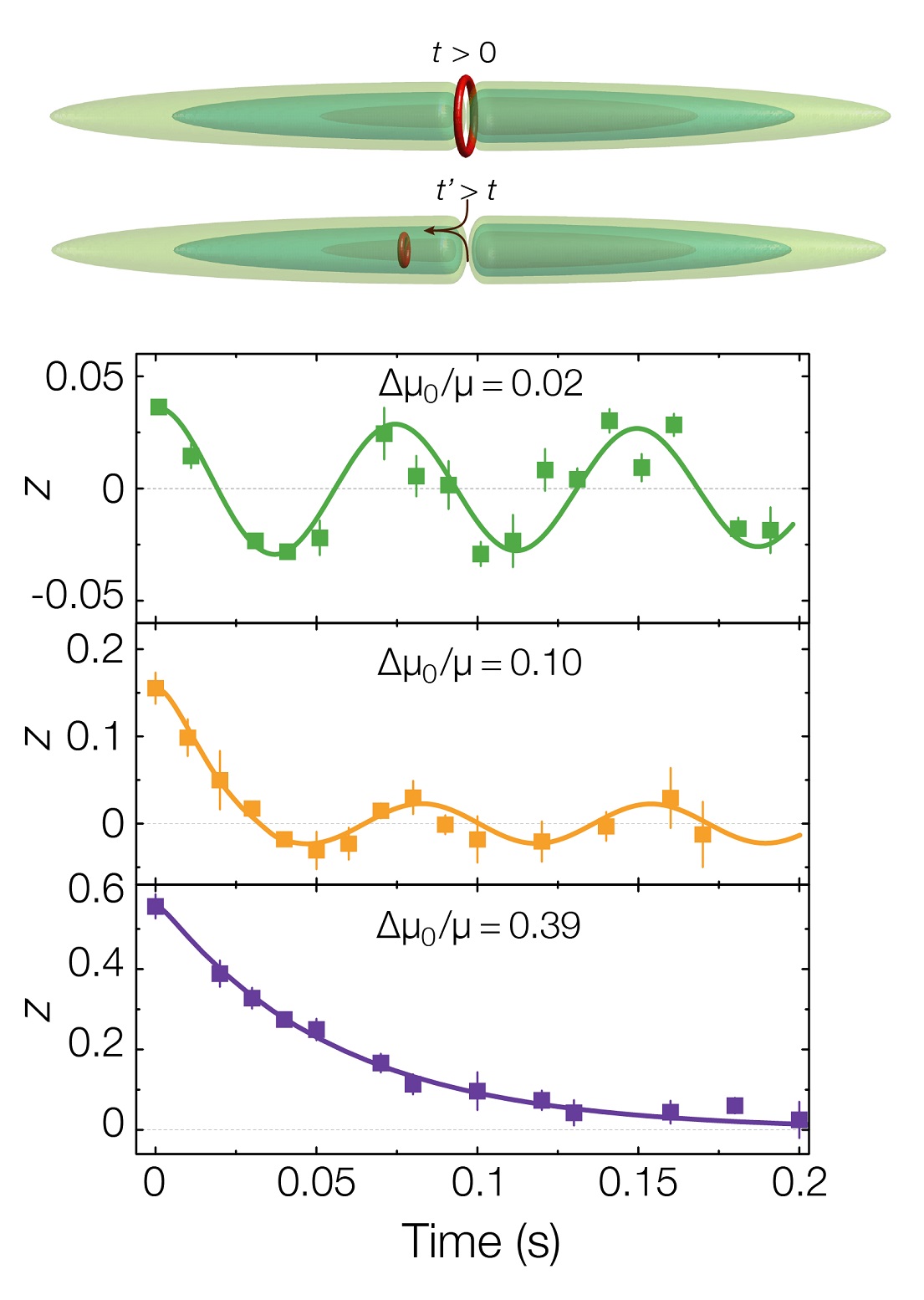 |
We study the emergence of dissipation in an atomic Josephson junction between weakly coupled superfluid Fermi gases. We find that vortex-induced phase slippage is the dominant microscopic source of dissipation across the BEC–BCS crossover. We explore different dynamical regimes by tuning the bias chemical potential between the two superfluid reservoirs. For small excitations, we observe dissipation and phase coherence to coexist, with a resistive current followed by well-defined Josephson oscillations. We link the junction transport properties to the phase-slippage mechanism, finding that vortex nucleation is primarily responsible for the observed trends of the conductance and critical current. For large excitations, we observe the irreversible loss of coherence between the two superfluids, and transport cannot be described only within an uncorrelated phase-slip picture. Our findings open new directions for investigating the interplay between dissipative and superfluid transport in strongly correlated Fermi systems, and general concepts in out-of-equilibrium quantum systems. A. Burchianti, et al., |